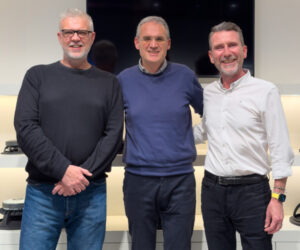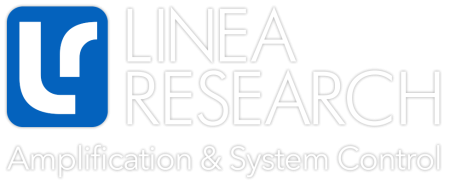Sennheiser’s SpeechLine digital wireless microphone system has recently helped University of Nevada, Las Vegas (UNLV) Classroom Technology Services department improve its audio communications.
Since installing its first SpeechLine digital wireless system in the newly built William F. Harrah College of Hospitality Hall, AV/IT systems specialist Frank Alaimo and classroom control Systems specialist Michael Theil have streamlined their roles and grown the university’s enterprise AV system with the Sennheiser Control Cockpit software suite, which enables them to actively monitor every new SpeechLine digital wireless device on the network.
“We started using the new microphone systems when the university built the new Hospitality Hall, because part of the design included SpeechLine digital wireless microphones in every classroom,” Theil says.
“We had such success with them, so we went through and removed all the analog systems and started to build our system off the new standard,” Alaimo added. “And the SpeechLine digital wireless systems in the Hospitality Building became the new standard.”

Sennheiser’s SpeechLine digital wireless is designed exclusively for speech applications. Accessible on any platform through a web browser, the Sennheiser Control Cockpit software facilitates easy handling, control and maintenance of the entire SpeechLine digital wireless system, offering a continuous, global dashboard overview of all network-enabled SpeechLine digital wireless devices, showing status information at a glance.
UNLV’s enterprise system now includes SpeechLine digital wireless systems in over 40 campus spaces, including classrooms and lecture halls ranging from 35-160 seats, auditoriums, computer labs, and even a teaching kitchen. Using Sennheiser Control Cockpit, Alaimo and Theil are now able to set up and remotely manage the operation of each additional SpeechLine digital wireless device — eliminating much of the hassle associated with sending student workers from one campus building to another to address many of the technical difficulties they had with their previous analog systems.
“We have a workforce of about 10 students who monitor the day-to-day operation of control systems, and with the old series, if there was a mic problem, we basically always had to send someone out,” Theil says. “That added up to a ton of time we’d spend sitting around waiting. So we were looking for a way to minimize lost class time by providing the instructors with reliable tools that work when they need them.”
“We were always running into problems with frequencies being taken over, and we were constantly having to update our frequencies to comply with new regulations,” Theil continues. “And then we would have frequency issues when one room’s signal would encroach on another, and we’d have to put another receiver in. Trying to keep track of all that was a big pain for us. Plus, we weren’t getting any feedback to know when the batteries were low.”
Now, using Sennheiser Control Cockpit to monitor UNLV’s SpeechLine digital wireless devices, Alaimo and Theil can easily check the link status and the battery info on any device, set receiver sensitivity for each system, or easily pair a system with an additional microphone when a classroom has a guest speaker.
“We keep monitors behind our help desk and have different modes of monitoring software, and one of them is set to the Control Cockpit so that we can see which mics are on, how they’re being used, and we can make sure they’re not muted,” Theil explains.
“We’ve even had instructors call over saying that they didn’t have any audio coming through, and we would just look over at the Control Cockpit and see they’re muted, and the solution would be as simple as telling them to just unmute their microphone,” Alaimo says.
“Another issue we had with the older microphones was when the instructors would mess with the sensitivity on the receiver, and we’d get calls from the next instructor in the room saying that, as soon as they turned the receiver on they would get feedback,” Theil continues. “Now we don’t have to worry about that, because each device has the levels set automatically, so there are no settings instructors can mess with on the receiver itself.
“Through the Control Cockpit, not only can we get information about devices in use, but we can also change settings on the fly. So if we want to change the name of a device, or put different filters on, we can do that now. And we can get the serial number and the firmware version of the receivers remotely, so we know if we need to update the firmware or if we need to go into the room for anything. The new system is just a lot simpler.”




















